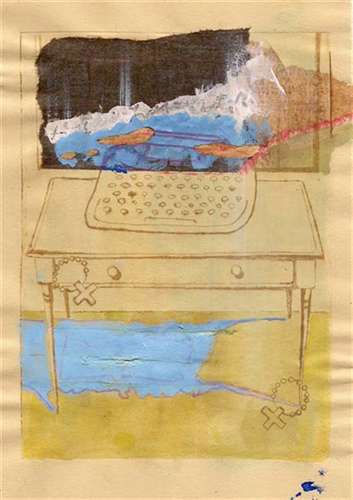
Just the Facts: Journalism is nonfiction writing that informs and educates the general public about newsworthy topics or current events. Seventh- and eighth-grade journalists may submit works of 400-2,000 words to the 2013 Scholastic Awards; those in 9-12 grade have a 500-3,000 word limit. There are no limitations on subject matter, theme or language in submitted work. Jurors look for originality, technical skill, and the emergence of a personal voice.
For a good example from this category, read the following excerpt from 2012 Gold Medalist Alexa Horwitz’s winning story, Gimme Shelter.
Ordinary People, Extraordinary Choices
A competitive tennis player since she was eight, senior Alexa Horwitz draws parallels between writing a good journalistic profile and scoring an ace: both require patience, focus and luck.
Luck came her way when she met Linda Burston while volunteering at The Women’s Lunch Place, a daytime shelter in Boston for low-income and homeless women and their children.
“I love telling the stories of ordinary people doing extraordinary things,” says Alexa. “I was struck by Linda’s honesty and humanity—it was an honor to tell her story.”
A keen eye for detail, sharp ear for dialogue, courage and caring: these are the qualities that a talented journalist uses to create a great profile. Alexa finds her role model right at home: her mom Kasey Kaufman, a 30-year veteran broadcast journalist, reported from Ground Zero on September 11, 2011.
“She has always brought compassion to every story she covers,” Alexa notes, adding, “and that’s something I strive to do.” Has Alexa achieved her goal? Decide for yourself as you read this excerpt from Gimme Shelter. Click here for the full story.
Gimme Shelter
Who wants to dance with a sexy, gorgeous fifty-eight year old babe?” Linda Burston asks with her trademark laugh that starts somewhere deep in her belly. “I’m a burnin’, churnin’ love machine, and I want to get down.”
It is shortly before noon at the Women’s Lunch Place on Newbury Street, and Linda is getting her groove on, belting out an off-key rendition of a Gloria Estefan hit. But, despite her high energy and some funky Latin disco moves, Linda isn’t getting any takers among the dozens of homeless women scattered throughout the lunch room of the day shelter. The regulars at the shelter are used to Linda’s outrageous behavior, but some of the other women stare, open–mouthed, at the way she gyrates to the salsa infused beat.
Everything is big about Linda: the sound of her booming voice, her oversized personality and her ample behind, squeezed into a pair of skin tight jeans. Even the Mohawk wig she likes to wear, the one with a big red stripe down the middle, is enormous. It adds another six inches on top of her sturdy frame. But nothing about Linda is quite as big as her smile. It starts at her generous mouth, and then spreads across her weathered face, making her eyes sparkle like dark amber jewels. Her skin is smooth and the color of dark, rich molasses. A missing front molar completes the picture, but Linda is completely unselfconscious of her gap-toothed grin, or the bump on the bridge of her nose, broken, years ago, in a bar room brawl.
“Let’s get down, girlfriend.” Linda has finally found herself a dance partner, a schizophrenic named Sally, who has been living on the streets of Boston for more than a decade. Sally’s hair is a matted mess, and her tattered clothes are crusted with layers of grime and grit, but her face is filled with joy, and for a moment, she looks like the queen of a homecoming dance.
Welcome to Linda’s World.
